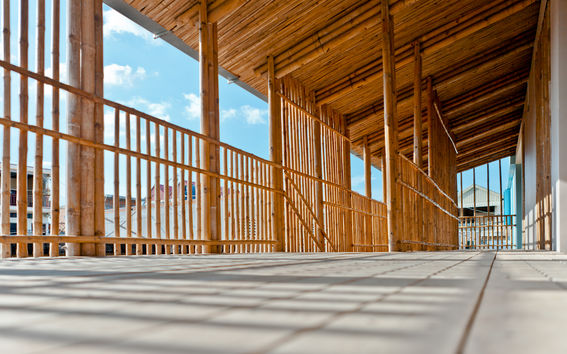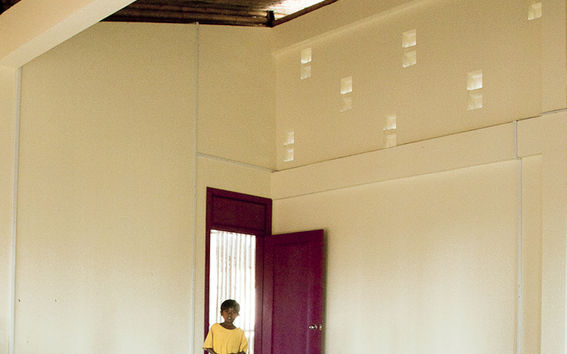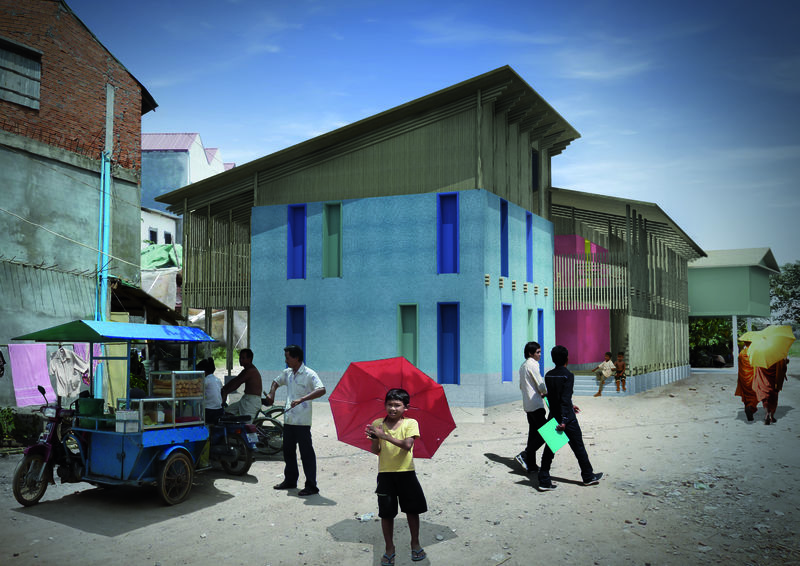Kouk Khleang Youth Center

Construction of the youth center is a result of cooperation between Komitu Architects, a group of young Finnish architects and two Cambodian NGOs: Cambodian Volunteers for Society (CVS) and Khmer Kampuchea Krom Human Rights and Development Organisation (KKKHRDA) who work with the youth from Phnom Penh's poor communities offering them possibilities for education, employment and societal participation. The youth center includes educational spaces as well as spaces for meetings, recreational
activities and accommodation for poor students.
The future users of the building and members of the surrounding community had an essential role in the design process. Working together with them through workshops ensured a building which is both functional and a symbol of their power and will to develop their society towards a better future. Also local students and professionals of architecture and engineering were engaged in the project through workshops, lectures and site visits. This led to one of the greatest achievements of the project as a local NGO (UPDF) realised a community center in bamboo and is organising bamboo trainings for a network of community builders throughout Cambodia.

The main aspirations of the material choices and construction techniques used in the building have been sustainability and cultural understanding. The main materials of the building are bamboo, compressed earth brick and recycled plastic bottles. The main load bearing structure of the building is a concrete frame which is the most common building method in Phnom Penh. The frame is filled up with locally produced earth blocks. The carbon footprint of earth blocks is ten times smaller than of red bricks per mass. All bamboo parts are standardized and only hand tools have been used in their construction. Thus the building is easy to maintain and the techniques can be applied in future building projects of the local people. During the project an illustrated, khmer-language bamboo construction guide was produced. Rainwater is harvested on site and the ground floor is raised against flooding.









